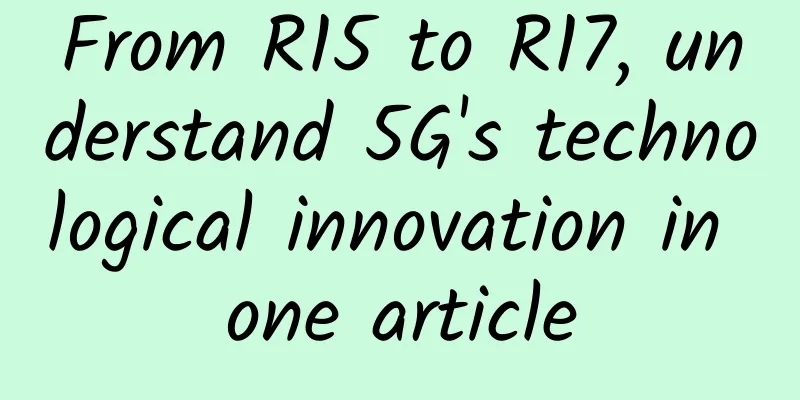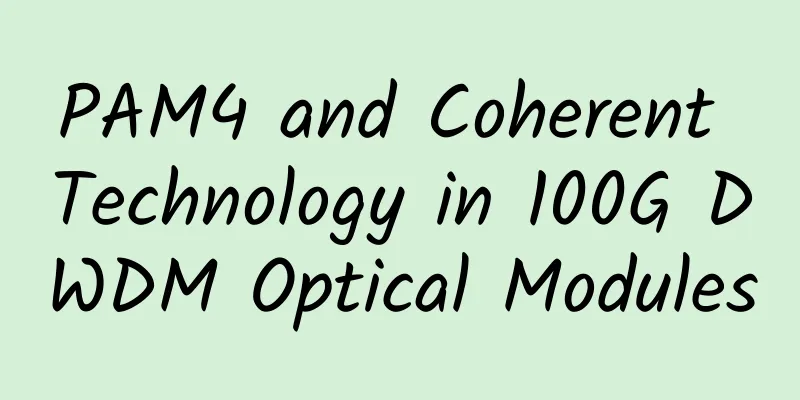From R15 to R17, understand 5G's technological innovation in one article

|
In early June 2022, the 96th plenary session of the communications standards organization 3GPP was held as scheduled in Budapest, Hungary. At this meeting, the highly anticipated 3GPP R17 standard was officially announced to be frozen. This means that the first phase of 5G evolution has been completed and the development of 5G technology will enter a new second phase. Looking back , about seven years ago, in September 2015, the International Telecommunication Union (ITU) officially confirmed the three major application scenarios of 5G (eMBB, mMTC and uRLLC). Soon after, in March 2016, 3GPP officially launched the standardization of 5G, aiming to develop a unified and more powerful wireless air interface - 5G NR (New Radio). Today, time flies, and we have witnessed the freezing of 3GPP R15, R16, and R17 versions, as well as the full commercialization and popularization of 5G. 5G, which is highly anticipated, has gone through a development process from birth to maturity. It is constantly changing our work and life, and has also subverted the operating model of the entire society. So the question is, what revolutionary technological innovations have emerged in the process of 5G's continuous evolution? What kind of logic is hidden behind these technological innovations? From R15 to R17, what is the role of each stage? In today's article, Xiaozaojun will lead you to find the answer. R15: Laying the foundation and unveiling the veilFirst, let’s take a look at the innovative ideas of R15. R15 is the beginning of 5G standard formulation. As the saying goes, "well begun is half done." In order to take a solid first step, experts in the communications industry have conducted sufficient research and preparation. At that time, the most important mission of R15 was to formulate standards for the eMBB (enhanced mobile broadband) scenario, which required the most important indicator of the communication network: rate. The ITU's eMBB indicator requirements are that the downlink peak rate must reach more than 10Gbps and the user experience rate must reach more than 1Gbps. In order to meet this requirement, 3GPP has adopted two ideas: one is to find more available spectrum resources, and the other is to deeply explore the potential of each MHz frequency resource. In terms of expanding spectrum resources, 3GPP proposed mobile millimeter wave technology based on the Sub-6GHz frequency band. In other words, the operating spectrum of 5G will be extended to higher frequency bands to cover the millimeter wave frequency band. The speed and capacity improvements brought by mobile millimeter waves are very obvious, laying the foundation for 5G high-speed connections. Based on millimeter wave technology, 3GPP introduced Massive MIMO (large-scale antenna array). This technology is one of the most iconic innovations of 5G, and can be said to be a "masterstroke". It increases the number of antennas in the base station to form independent narrow beam coverage for different users, thereby increasing the system throughput by dozens of times and improving the coverage of the base station (especially making up for the lack of millimeter wave coverage). Massive MIMO In terms of further exploring the potential of spectrum resources, the technical challenges are even greater. This involves a large number of underlying technology innovations, including multiple access technology, modulation technology, coding technology, physical layer structure, etc., all of which need to be redesigned. One of the most important decisions in 5G NR design is the selection of radio waveform and multiple access technology. During the evaluation process at the time, Qualcomm found through extensive research that the orthogonal frequency division multiplexing (OFDM) system, specifically including cyclic prefix orthogonal frequency division multiplexing (CP-OFDM) and discrete Fourier transform spread spectrum orthogonal frequency division multiplexing (DFT-S OFDM), is the best choice for 5G eMBB and more other scenarios (which was later proved to be the case). Based on the existing OFDM applications in 4G LTE, Qualcomm Senior Engineering Director Ji Tingfang designed a unified subcarrier spacing index expansion formula to achieve scalable OFDM parameter configuration. This technical invention, known as the "scalable parameter set", is a major highlight of R15. By using scalable OFDM parameter configuration, the subcarrier spacing can be expanded with the channel width to the power of 2. In this way, in a system with a larger bandwidth, the FFT point size can also be expanded without increasing the processing complexity. Another refreshing design of R15 is the flexible framework based on time slots. The key technical invention of this flexible framework is the 5G NR self-contained time slot structure . In the new self-contained time slot structure, each 5G NR transmission is modularly processed and has the ability to be decoded independently, avoiding static timing relationships across time slots. In June 2018, the 3GPP R15 standard was officially frozen. Now it seems that R15 has successfully fired the first shot of 5G. The many innovations it brings have unveiled the mystery of 5G and laid a solid foundation for the subsequent iterative evolution of 5G. R16: Scenario expansion, empowering the industryR15 mainly formulated standards for eMBB (enhanced mobile broadband) scenarios. Based on R15, R16 further improved the standard specifications for uRLLC and mMTC scenarios, thus contributing the first complete 5G standard and the first 5G evolution standard. In essence, providing support and empowerment for vertical industries is the most important mission of R16. R16 needs to standardize the uRLLC (ultra-reliable low-latency communication) scenario, which is mainly aimed at vertical industries such as the industrial Internet and the Internet of Vehicles. The indicator targets proposed by ITU for the uRLLC scenario include stricter reliability requirements (up to 99.9999% reliability) and millisecond-level latency. R16 needs to further enhance the basic capabilities of 5G networks and introduce more new network features to better support key business use cases for toB and meet the needs of vertical industries such as smart manufacturing, smart quality inspection, and unmanned driving. In terms of enhancing basic network capabilities, R16 has made special optimizations and enhancements to spectrum efficiency, network utilization and robustness, including large-scale antenna enhancement, carrier aggregation enhancement, switching technology enhancement, etc., which greatly improves the availability and perfection of 5G. In terms of introducing new features, R16's performance is even more remarkable. Taking spectrum expansion as an example, R16 adds support for 5G NR unlicensed spectrum (NR-U), including two modes: licensed assisted access (LAA) and independent deployment that does not require any licensed spectrum. This not only brings greater capacity, but also enables more flexible deployment. For the reliability and latency requirements mentioned above, Qualcomm-led Cooperative Multi-Point Communication (CoMP) is one of the key enabling technologies to achieve this goal. In this technological innovation, multiple transmission and reception points (multiple TRPs) are used to create spatial diversity with redundant communication paths, achieve high reliability and low latency, and build an available Time Sensitive Network (TSN). Vehicle-to-everything (V2X) is an important vertical application area of 5G. In this area, direct-to-everything (D2D) promoted by Qualcomm and other companies is an important technological innovation that can enable V2X to support more diverse vehicle-to-everything application scenarios, such as vehicle platooning, semi-autonomous driving, external sensors, and remote driving. In terms of networking technology, R16 introduces remote interference management, wireless relay, network organization and self-optimization technology, which improves the actual user experience of the network. Representative examples are new interference measurement and mitigation technologies (such as RIM/CLI) and integrated access and backhaul (IAB). Integrated Access and Backhaul (IAB) supports millimeter wave base stations for wireless access and backhaul, which can effectively reduce the need for additional fiber deployment when deploying dense networks. It is particularly worth mentioning that in order to better promote the implementation of 5G in government and enterprise vertical industries, R16 has also innovated in the private network deployment model and launched support for non-public networks (NPN), pointing out the direction for the development of 5G private network communications. R16 introduces many new features, including terminal energy saving, enhanced terminal mobility, high-precision positioning, etc. in addition to the above technologies. In July 2020, the R16 standard was officially frozen. If R15 only achieved a "usable" 5G, then the role of R16 is to turn the "usable" 5G into a "useful" 5G. It has made in-depth enhancements and improvements in cost, efficiency and functionality, paving the way for the full implementation of 5G. R17: Capability upgrade, application explorationFinally, it’s R17! If we use one word to describe the positioning of R17, it would be " connecting the past and the future ". As the third major version of the global 5G NR standard, R17 further expands the 5G technology foundation in terms of network coverage, mobility, power consumption and reliability, and broadens 5G to new use cases, deployment methods and network topologies. The key words for R17 evolution can be divided into "enhancement" and "extension".
R17 is a standard developed after 5G is put into large-scale commercial use. Therefore, it can be used to "check for gaps and fill in the gaps" based on the experience of 5G's early actual deployment and the deficiencies found. R17 brings more enhanced features to the basic capabilities of 5G systems, such as capacity, coverage, latency, energy efficiency and mobility, including Massive MIMO enhancement, coverage enhancement, terminal power saving, spectrum expansion, IAB enhancement, uRLLC enhancement, etc. Let’s start with the spectrum. R17 expands the spectrum of 5G millimeter wave and defines a new and unique frequency range called FR2-2, pushing the upper limit of the millimeter wave spectrum to 71 GHz. This means that the network capacity of 5G millimeter waves will become larger, and more use cases and deployment methods will be realized, such as millimeter wave enterprise private networks that support communication and positioning functions in the smart manufacturing industry. Thanks to the 5G NR scalable subcarrier spacing (SCS) scheme and slot-based flexible frame structure, this band extension can directly extend the subcarrier spacing of control and data channels to 480 kHz and 960 kHz (previously 120 kHz for low-band mmWave). In addition to frequency band expansion, R17 also brings other millimeter wave enhancements, including support for inter-band uplink/downlink carrier aggregation and enhanced mobility. IAB (Integrated Access and Backhaul) enhancements, from features such as simultaneous transmit/receive (i.e. full-duplex) and enhanced multi-hop operation, can further improve deployment efficiency, coverage and performance. This is especially useful for mmWave deployments, which can quickly expand coverage more economically and efficiently. In terms of terminal capability enhancement, R17 proposes a series of enhanced features to improve user experience. For example, support for up to eight antennas and additional spatial streams can achieve higher throughput; advanced MIMO enhancements can improve capacity, throughput and battery life; new energy-saving features for connected and idle modes can extend battery life; retransmission and higher transmission power can improve the network coverage of terminals; 5G positioning technology enhancements can improve positioning accuracy and latency; dual SIM dual standby can support two subscription services concurrently from a single or two operators; and so on.
R17, as a transition between the first and second phases of 5G, not only enhances the existing 5G, but also explores more 5G application scenarios. These possibilities include RedCap, non-terrestrial network (NTN), extended direct communication, centimeter-level positioning, extended broadcast/multicast, and unbounded XR (extended reality). The most representative technology introduced by 5G R17 is, of course, RedCap, also known as NR-Light, for medium and low-speed IoT applications. RedCap is a simplified version of 5G. By reducing the complexity of the protocol and adopting better energy-saving technology, it can meet the needs of the Internet of Things such as wearable devices, industrial sensors and surveillance cameras. Another new feature of R17 that deserves attention is the non-terrestrial network (NTN). In recent years, people have been paying more and more attention to satellite communications. In order for 5G to provide ubiquitous connectivity, 3GPP has also stepped up research on network coverage in non-terrestrial areas. In R17, there are two parallel NTN working groups to deal with mobile broadband and low-complexity Internet of Things (IoT) use cases. The first project uses the 5G NR framework for satellite communications, enabling fixed wireless access (FWA) backhaul from the ground to satellites and providing low-speed data and voice services directly to smartphones. The second project focuses on supporting satellite access for low-complexity eMTC and NB-IoT terminals, expanding network coverage for key use cases such as global asset tracking. The last new direction of R17 I want to mention is boundless XR. The Metaverse, which became popular last year, showed us a personalized digital experience that spans the physical and virtual worlds. As the underlying support technology of the Metaverse, XR extended reality technology represented by VR and AR has received more attention. The XR project in Release 17 focuses on studying and defining various types of XR traffic (AR, VR, cloud gaming). This research defines requirements and evaluation methods for the identified XR traffic types, and supports performance evaluation to determine future areas of improvement. ConclusionSomeone once said that the development process of 5G from R15 to R17 is like the process of building a house: The R15 version is a "rough house" of the 5G technology standard, with the foundation and framework built. The R16 version is a "fine decoration" of the 5G standard, which makes it have preliminary "living conditions". The newly released R17 version is a "soft decoration" on top of the "fine decoration", which has the effect of icing on the cake and makes the living experience better. This is indeed the case. The first phase of 5G is a dynamic expansion process, and mobile communication technology begins to empower the Internet and digital transformation of industries. Through the technological innovations mentioned above, we are constantly challenging the limits of Shannon's theory and exploring the future development direction of communication technology. Judging from the current interim results, 5G has laid a solid foundation for the digital transformation of the entire society through these highly disruptive technological innovations. The massive number of 5G vertical industry implementation cases has greatly enhanced people's confidence in 5G and the digital economy. Looking ahead, we are about to enter the 5G-Advanced era. The first standard version of 5G Advanced, R18, has been fully launched. It will open a new round of wireless technology innovation and safeguard the prosperity and development of the digital economy. What kind of excitement is waiting for us? Let's wait and see! |
<<: Wireless power could be key to 5G-enabled sustainable smart cities
>>: Which Ethernet (Cat5, Cat5e, Cat6, Cat6a) cable should I use?
Recommend
Yecao Cloud: Hong Kong special cloud server annual payment starts from 138 yuan, independent server monthly payment starts from 399 yuan
Yecaoyun, a Chinese VPS host, has released a new ...
10gbiz: Hong Kong CN2 GIA+China Unicom VIP line launched, VPS 60% off monthly payment starting from US$2.75
10gbiz has launched a new VPS host in the Hong Ko...
Buying a ticket can cause a loss of 100,000 yuan. This is the black market you don’t know about.
Recently, Damai.com was attacked by a database co...
China Unicom and its partners release the Trusted Network White Paper
On July 9, 2023, China United Network Communicati...
30 countries will launch 5G services by 2023
New network deployments and enterprise momentum a...
BGPTO: Japan/Singapore CN2 GIA server $64/month, E3-1230v3/16GB/480G SSD/10-100M bandwidth
It's been a while since I shared information ...
Mellanox Launches Innovative ConnectX-6 Dx Chip, BlueField-2 Secure Cloud SmartNIC and I/O Processing Unit Solutions
Beijing, China – September 3, 2019 – Mellanox Tec...
Sharktech Spring Promotion, 10Gbps unlimited traffic high-defense server starting from $299/month, 2*E5-2678v3/128G/2TB NVMe/4 computer rooms including Los Angeles
Sharktech has launched a spring promotion, with d...
Listen to Medical Information | Why do hospitals choose minimalist Ethernet color optical network for network construction?
As the overall informatization of the medical ind...
Ruijie Networks Completes SA-Based 5G Small Cell Test in China Mobile Laboratory
Ruijie Networks has always adhered to the concept...
What? You still don’t know the best assistant for 5G? Come in!
who I am Hello everyone, my name is OpenStack, a ...
"Wo connects everything, wins the edge with intelligence" 2018 China Unicom Edge Cloud Ecosystem Partner Conference was held in Beijing
Normal 0 7.8 磅 0 2 false false false EN-US ZH-CN ...
In-depth analysis of the seven major communication protocols of IOT
In the Internet of Things protocol, it is general...
Fiber optic communication speed breaks record! It can transmit 1.84Pbit per second, twice the total global Internet traffic
This article is reprinted with permission from AI...
Abandon 2.4GHz! This is the new Wi-Fi standard 802.11ax
In our daily router reviews or shopping guides, w...









